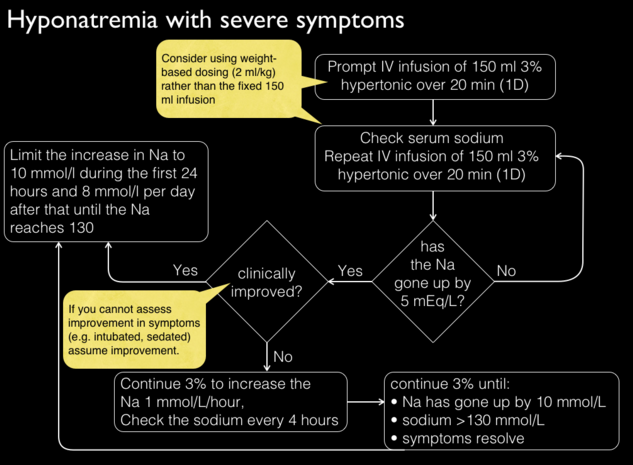Before you all die of boredom it turns out that sodium is really important. it’s something we also seem to get very confused by.
The wonderful Josh Farkas had a post on low Na (mainly about using Bicarb as treatment) with a quote from the European Guidelines (that I didn’t even know existed at the time)
You’d think a guideline would be a fairly dull read and only concerned with grading evidence recommendations. Well it’s a bit more than that and their background section is full of little pearls that occasionally surprised and educated me.
- pseudohyponatremia is the low Na with high proteins like myeloma. This is a measurement problem and is artifactual. This is different from the low sodium that occurs with high sugars (see next point)
- the low na with DKA or high sugars is a “translocational” hyponatremia and merely due to the high sugar drawing water out of the cells and diltuting the sodium. The sodium really is that low, it’s not artefact.
- measured and effective osmolality are different
- measured is a chemical thing of the concentration of all solutes regardless of whether these can move across a membrane
- effective osmolality can be known as tonicity and refers to the number of osmoles that contribute to water movement
- this is why urea will increase the measured osmolality but not the effective osmolality and this is reflected in the equations (alcohol is an ineffective osmole however mannitol is an effective osmole)
- perhaps the most important take home message for emergency physicians
- low Na with severe symptoms = 150ml 3% stat
Prompt infusion of hypertonic saline may save lives and preparing a 3% hypertonic saline infusion takes time. In addition, errors may occur from having to calculate the required amount of sodium chloride in an emergency.
Joel Topf, twitter’s favourite nephrologist made a nice image summarising the treatment options

References:

Timely! Bumped into one of this guys last week. Consultant on call was very concerned re ODS so we went with the conservative LITFL dose 1 ml/kg over 40 min. Unsurprisingly, the patient continued to twitch. Thanks for the heads up re European guideline. Didn’t know that existed either.
Happy New Year
Hi Sam
Thanks for the comment. I’m sure there’s lots of disagreement about the dose but it’s nice to know there’s an international guideline to back you up.
Andy